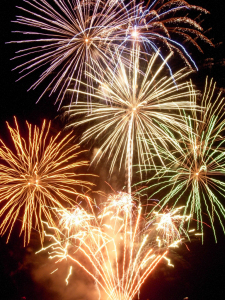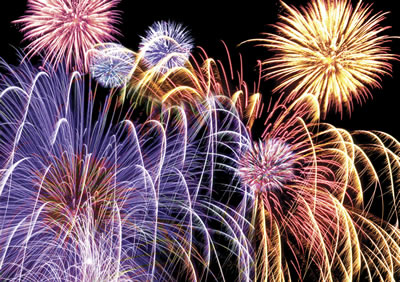va-por. noun. Moisture or another substance diffused or suspended in air, e.g., mist or smoke.
[The Oxford American Dictionary and Language Guide. New York, Oxford University Press. 1999.]
The Vapor Effect
 There are experiences in our lives that leave an indelible mark. Revisiting them provokes strong sensations of haunting images or sounds, and equally strong emotions ranging from profound joy to sadness and longing.
There are experiences in our lives that leave an indelible mark. Revisiting them provokes strong sensations of haunting images or sounds, and equally strong emotions ranging from profound joy to sadness and longing.
Then, there are other experiences that affect us in much more subtle ways, but perhaps no less profound. What you retain or bring away from such experiences—what sticks with you as you go about your day or week—is often so ephemeral that you may not even be conscious of its lingering effect. Like a luminescent vapor that clings to your clothing, dampens your hair, or hangs in your nostrils, the remnant of the experience stays with you and becomes part of you.
Take a fireworks display, for example. Our upcoming celebration of America’s Independence Day on July 4th has become synonymous with the use of fireworks for communities large and small. And witnessing a display with hundreds or thousands of others is a social event that is at once emotional and to many, even spiritual.
Saltpepper + Cooking Fire = Fireworks
 The history of fireworks leaves a vapor trail that stretches around the globe. Fireworks were first discovered in China in the second century BC, when a cook inadvertently dropped saltpeter into a cooking fire. The Chinese used their fireworks to commemorate celebrations, including weddings. Fireworks were brought west by early explorers and used extensively in Arabia. It is believed that Crusaders brought them from the Middle East and Asia Minor to England, where they soon became very popular among royalty, particularly Queen Elizabeth I. They were first used in America long before our own independence from England, as early settlers used them to celebrate important events and impress Native Americans. Fireworks were used in the first celebration of Independence Day, in 1777—six years before the Revolutionary War with England ended.
The history of fireworks leaves a vapor trail that stretches around the globe. Fireworks were first discovered in China in the second century BC, when a cook inadvertently dropped saltpeter into a cooking fire. The Chinese used their fireworks to commemorate celebrations, including weddings. Fireworks were brought west by early explorers and used extensively in Arabia. It is believed that Crusaders brought them from the Middle East and Asia Minor to England, where they soon became very popular among royalty, particularly Queen Elizabeth I. They were first used in America long before our own independence from England, as early settlers used them to celebrate important events and impress Native Americans. Fireworks were used in the first celebration of Independence Day, in 1777—six years before the Revolutionary War with England ended.
Today, people can enjoy the many advances made to fireworks technology—including many more arrays, shades of color, and sizes of explosions. Indeed, the modern fireworks display is as much art as science, as the beauty and thrill of each firework becomes a custom blend of pyrotechnic compounds. Today, we can witness rockets that explode with an incredible burst of color and sound, roman candles that shoot out stars, a fountain of sparks, “mines” which make a loud boom and burst of stars, “wheels,” and “cakes” which fire in quick sequence.
Sensual and Emotional
 The vapor effect of today’s fireworks is both sensual and emotional. It includes far more than the silver cloud of smoke that wafts through the crowds on the viewing field as we make our way to our cars and homes. It also is the collective “Ooohs” and “Ahhhs” that we exclaim in unison with each strobe flash, each shooting star or comet. It also is what we carry away from the event—memories of a conversation with family, friends, and neighbors, the dark stillness of the night sky, the whispers and giddiness of children experiencing their first display, the feeling of one-ness with our community and our world.
The vapor effect of today’s fireworks is both sensual and emotional. It includes far more than the silver cloud of smoke that wafts through the crowds on the viewing field as we make our way to our cars and homes. It also is the collective “Ooohs” and “Ahhhs” that we exclaim in unison with each strobe flash, each shooting star or comet. It also is what we carry away from the event—memories of a conversation with family, friends, and neighbors, the dark stillness of the night sky, the whispers and giddiness of children experiencing their first display, the feeling of one-ness with our community and our world.
The vapor effect stays with you— literally—and people of many cultures and persuasions throughout the ages— including marketing and advertising professionals—have employed its powerful “stickiness” to connect, influence, and persuade.
Creating a Vapor Effect that Lingers
 Companies dream of establishing their brand as one that will not only attract customers, but will also connect with them on an emotional level – creating a vapor effect that lingers with them. People who tend to be drawn to one brand over another often don’t have any logical reason for why they like it – something about it just draws them in.
Companies dream of establishing their brand as one that will not only attract customers, but will also connect with them on an emotional level – creating a vapor effect that lingers with them. People who tend to be drawn to one brand over another often don’t have any logical reason for why they like it – something about it just draws them in.
At The Souza Agency, we never underestimate the importance of the “vapor effect”, with people and with brands. Sometimes, looking for the “effect” project teams get lost and can’t find their way out…issues and problems don’t get resolved, and projects don’t get done. They get stuck.
Projects at the heart of the brand need to tug at the heart-strings, trigger strong emotions, and stay in the minds of consumers long after their first exposure. The key to taking a brand that is just “good” and making it unforgettable is understanding – and then tailoring to – the consumers’ emotional needs. The majority of our daily decisions are based more so on feelings than on logic and reason, and when picking which brand we prefer or which company we want to do business with – this is no exception. If we can use our branding and positioning to reach consumers on a deeper, more personal level – well, that’s one powerful vapor effect.
Our Independence Day
Think about the vapor effect at the Fourth of July fireworks and experience firsthand the vibrant bursts of light and color, the luminous glow, and the penetrating bang, boom, and whistle of stars, comets, mines, and rockets. Be aware of the lingering smoke that drifts over the viewing field—and the not-so-visible vapor effect the experience leaves with you.
